At last the much-anticipated Bosch Performance Line CX 2020 motor is here! In this article you’ll find the most relevant information, 10 exciting facts about the new drive as well as a comprehensive test of Bosch’s new powerhouse – because we’ve had the exclusive opportunity to test the new motor for you over several weeks.

As the largest and most important motor manufacturer in the premium ebike segment, Bosch introduced their first Performance Line CX motor in 2015, in response to the emerging eMTB trend, which it itself was instrumental in shaping. Frankly, without the market leader Bosch, ebiking wouldn’t be where it is today. While quality and functionality have always been high on Bosch’s list of priorities, the issues of integration and customisation have created the biggest challenges for most bike manufacturers. After all, the size and design of the motor heavily influence bike designs and geometry concepts. The same applies to the available displays and remotes, which strongly impact ergonomics and intuitive integration with the bike. Unlike many of their competitors, Bosch only provide a complete system and rely on standard parts for quick and easy availability of spares which is complemented by its well-established service network offered through its service partner Magura. We’ve already tested the new Bosch Performance Line CX 2020 on a number of bikes, amongst others, on the brand-new FOCUS JAM² 6.8 NINE.

Top 10 Facts about the 2020 Bosch Performance Line CX
The new Bosch Performance Line CX isn’t just a refreshed version of its outdated predecessor, but an entirely new motor altogether. In the ‘Old VS New’ comparison we’ll tell you what’s changed and if the new version is really that much better.

- More powerful: while torque remains constant at 75 Nm, the support of the new CX motor has been increased from 300% up to 340%.
- More compact: compared to the previous model, the volume has been reduced by almost 50%. Granted, the previous CX motor was quite bulky! This will allow for better, more sophisticated integration as well as improved bike geometry.
- Lighter: the new CX motor features a magnesium housing and weighs 25% less than its predecessor – around 2.9 kg.
- More sensitive: eMTB mode has been reprogrammed to deliver consistent power over a wide cadence range. Sprinting out of the gate or pedalling at an even cadence? In eMTB mode, the support feels very natural!
- Better modulation: Turbo mode has also been updated and is less choppy, especially when you get going, though still very powerful! As usual, the CX motor has four modes: Eco, Tour, eMTB and Turbo.
- Smoother: the transition at the 25 km/h threshold has been significantly improved. Instead of a mini chainring and a gearbox, the power is now transmitted directly via a large chainring. The motor has almost no internal resistance, which should eliminate the draggy feel of the previous model when pedalling above the 25km/h cut-off.
- Quieter? unfortunately not. The new motor has some noise issues – especially with the chainring’s new freewheel (for more details see our review on page XX).
- Narrower: the Q-factor (distance between the cranks) has been narrowed down to 175 mm in order to provide a more natural pedalling sensation. The narrower, the better. To compare, Yamaha’s motor is under 170 mm, Shimano’s is at 177 mm, and Brose’s is more or less 180 mm wide (depending on the cranks).
- Greater capacity: in addition to the previous 500 Wh internal battery, you’ve now also got the PowerTube 625, for more capacity and longer rides.
- Goodbye tuning: new anti-tuning software detects motor tuning and manipulation via sensors while you’re riding which then automatically switches the motor into limp home mode. Bosch is thus responding to the requirements of the EN15194: 2017 standard.
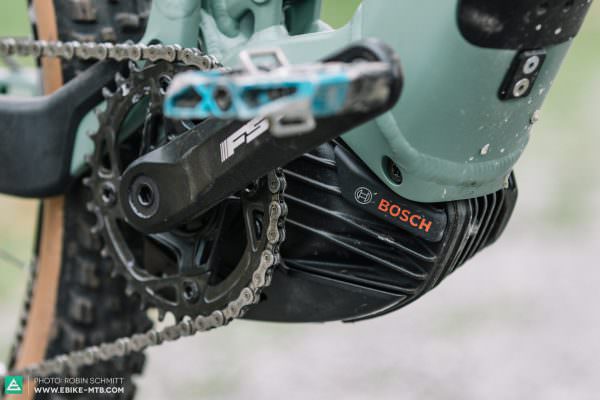

All Bosch displays at a glance
Welcome to the connected world: Bosch SmartphoneHUB Display 2020
The new SmartphoneHub is centrally located on the cockpit and makes use of your smartphone and the COBI.Bike app to function as an intelligent control centre. The functions range from navigation to a music station, fitness tracking and calls, to connecting to other services and apps such as Strava or Komoot. If you want to ride without your smartphone, there is a small, somewhat rudimentary display for the most critical riding data. The SmartphoneHub is most suited to trekking riders and commuters and we wouldn’t recommend it for trail riding.

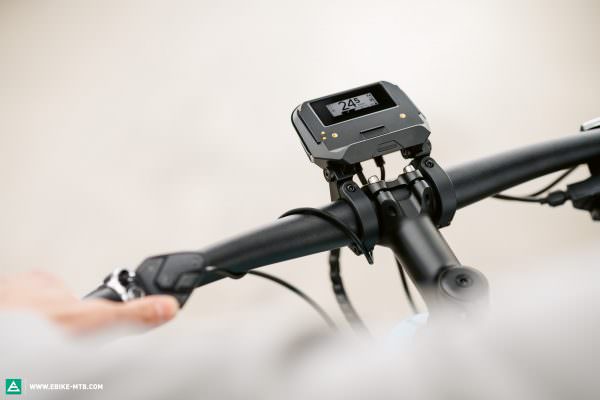
A colourful experience: the Kiox display
While the graphics on the compact colour display look excellent, poor readability on the trail and difficult integration with the cockpit make the Kiox a less attractive option for ambitious eMTB riders. A new feature is the Bosch eBike Connect app for wireless software updates. The app currently only offers very basic features such as transferring completed rides and fitness data. However, Bosch has plans to significantly improve its connectivity in the future.
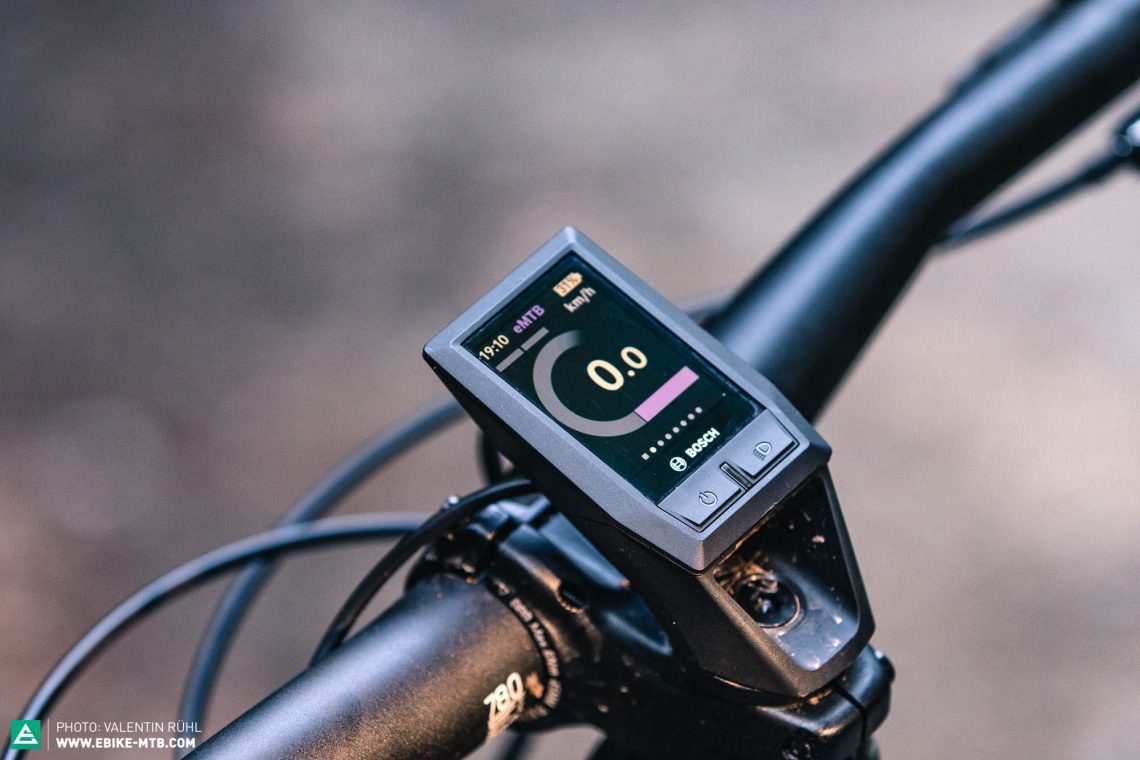
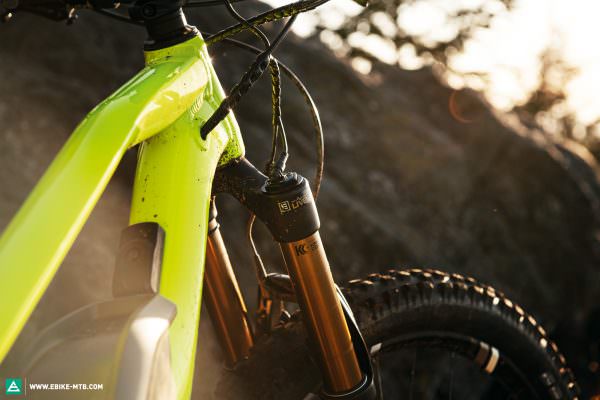
The FOX Live Valve can be controlled directly via the Kiox-display.
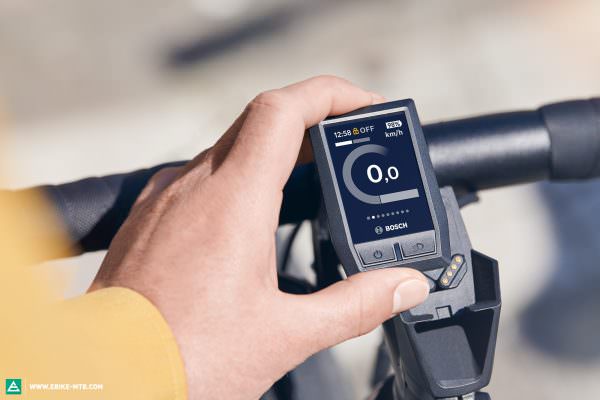
The optional lock function is available at an extra cost and stops your motor from running if the linked KIOX display is not connected Of course, you’ll still have to use a conventional lock to physically secure your bike.
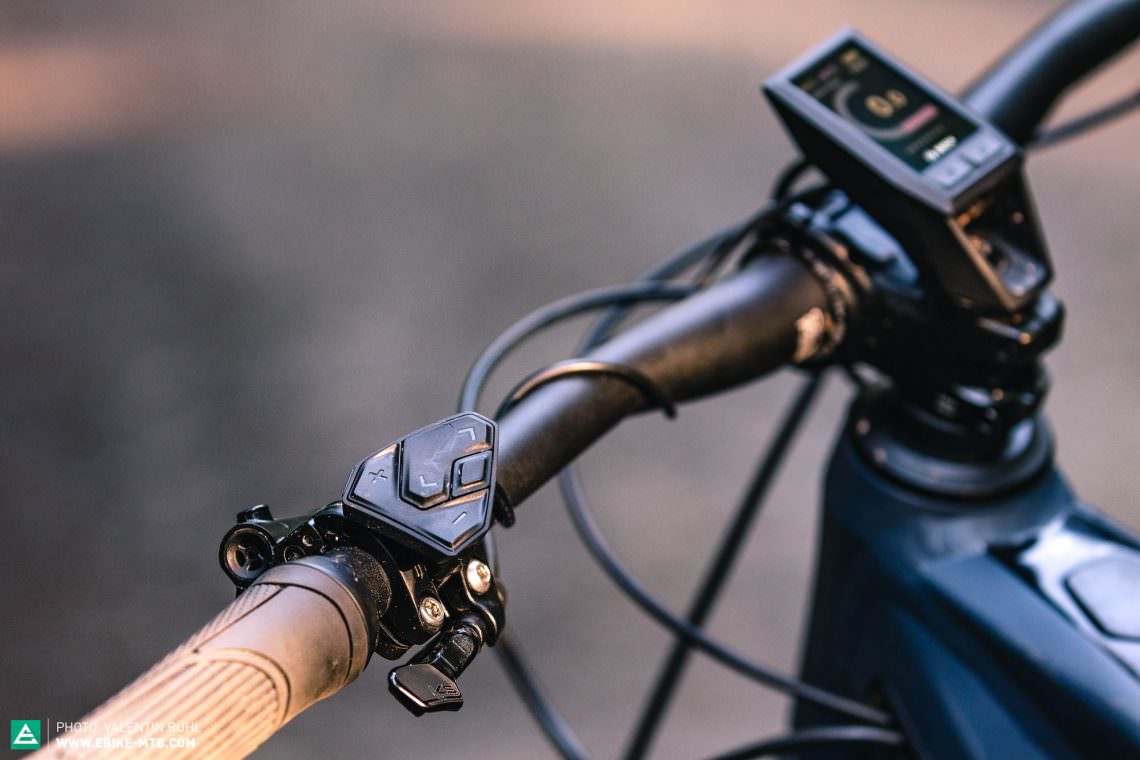
Reduced to the bare essentials: the Purion display
The Purion functions as a remote and display in one. The most compact of Bosch’s displays is located on the top-left side of the handlebar and can be operated intuitively with your thumb. The small b/w display provides you with all the most important riding data (speed, charge, assistance mode etc.) and is easy to read even in intense sunlight. With respect to digital networking and additional functions, the Purion was already outdated when it was launched back in 2017. Due to a lack of interfaces, the Purion can’t be connected to any external apps.
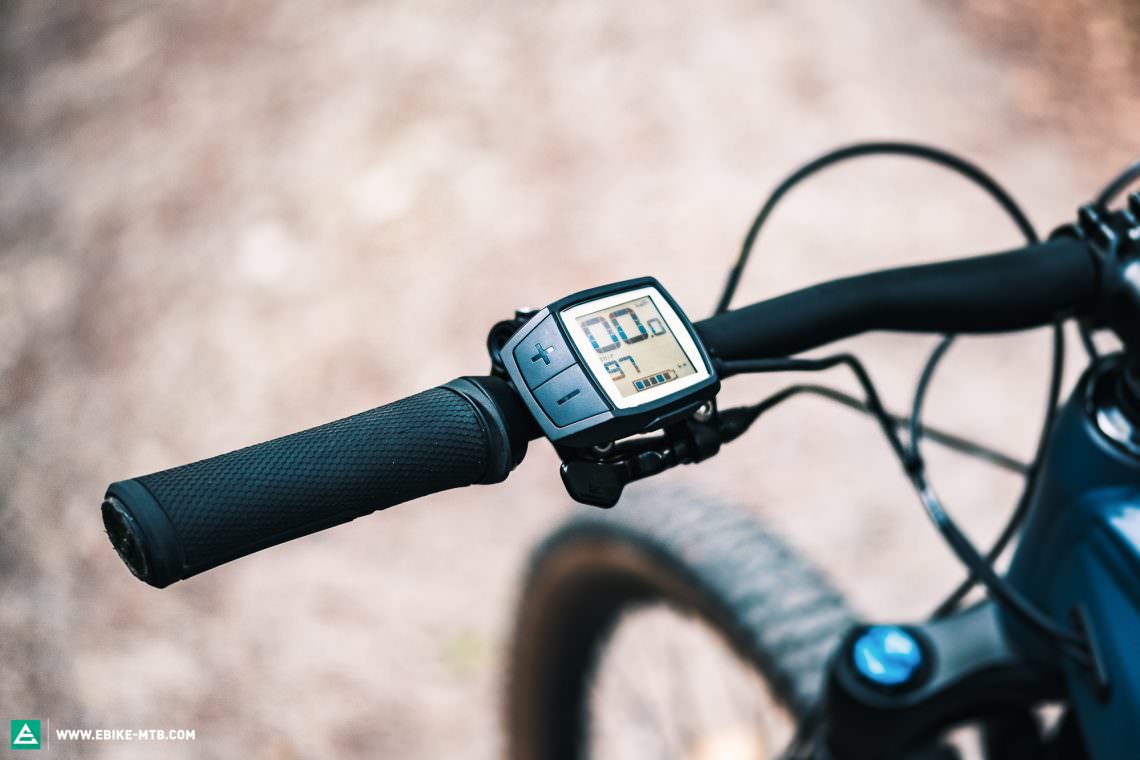
An ancient classic: the Intuvia display
Like the Purion, the Intuvia is both a display and a remote. The remote is clumsy to operate and in combination with the chunky display cable, not the most elegant of solutions. As the big display is located right on top of the stem, it’s rather susceptible to impacts too. Like the Purion, it provides all the most important riding data as well as a gear change indicator. External devices like mobile phones can be charged directly from the central battery via the integrated USB port.
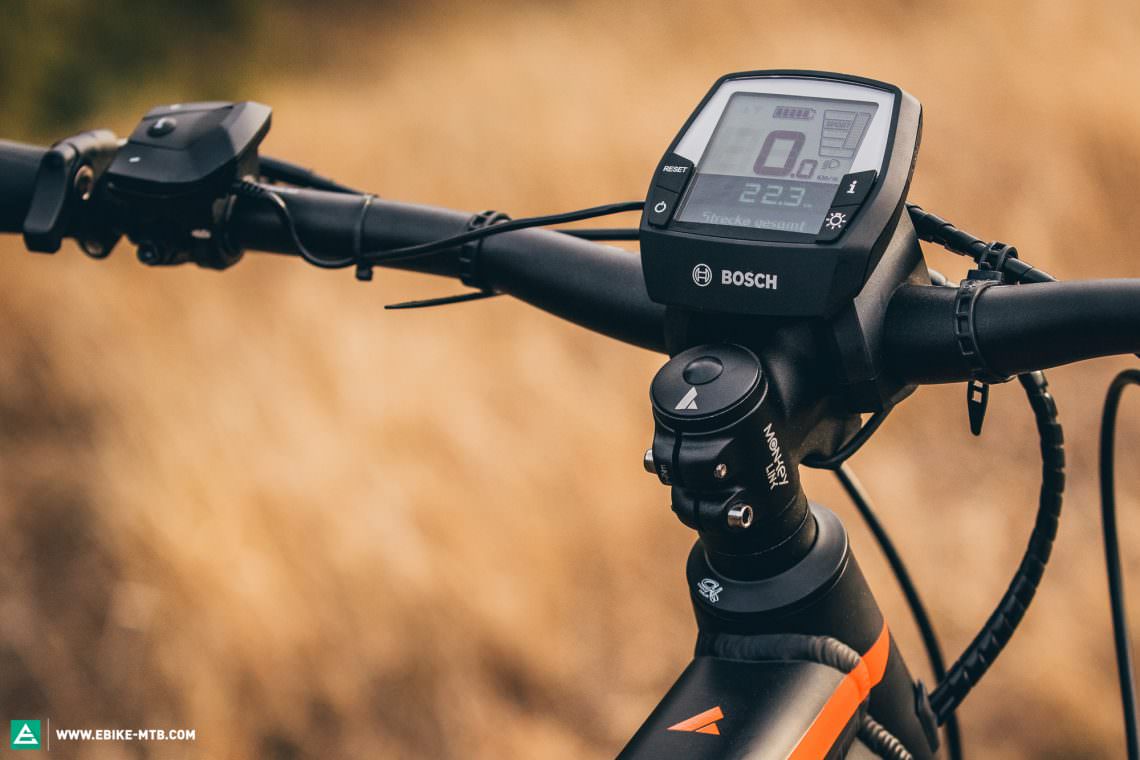
The big onboard computer: the Nyon display
The huge Nyon colour display provides key information on tracking, navigation and fitness data and also functions as an extension of your smartphone. This allows you to keep your phone safe in your pocket while riding and to read messages directly from the display. The Nyon is operated via a bulky remote which is located on the left-hand side of the handlebars. The navigation mode also takes into account what kind of riding you want to do, so mountain bikers will be taken mostly off-road on unpaved paths.

New batteries from Bosch
Bosch have also extended their range of internal batteries. The PowerTube 400 has the same shape as the PowerTube 500, which was launched two years ago. With a capacity of 400 Wh, the PowerTube 400 is suitable both for city bikes and as a spare battery to carry along on long eMTB rides. The true highlight in the battery department, however, is Bosch’s new powerhouse, the PowerTube 625. With a capacity of 625 Wh, it was designed to provide optimal range on long distances. But the extra power comes at a price: the big battery is a few centimetres longer and 700 g heavier than the PowerTube 500. Unfortunately that means that you can’t upgrade your current PowerTube 500 to a PowerTube 625.
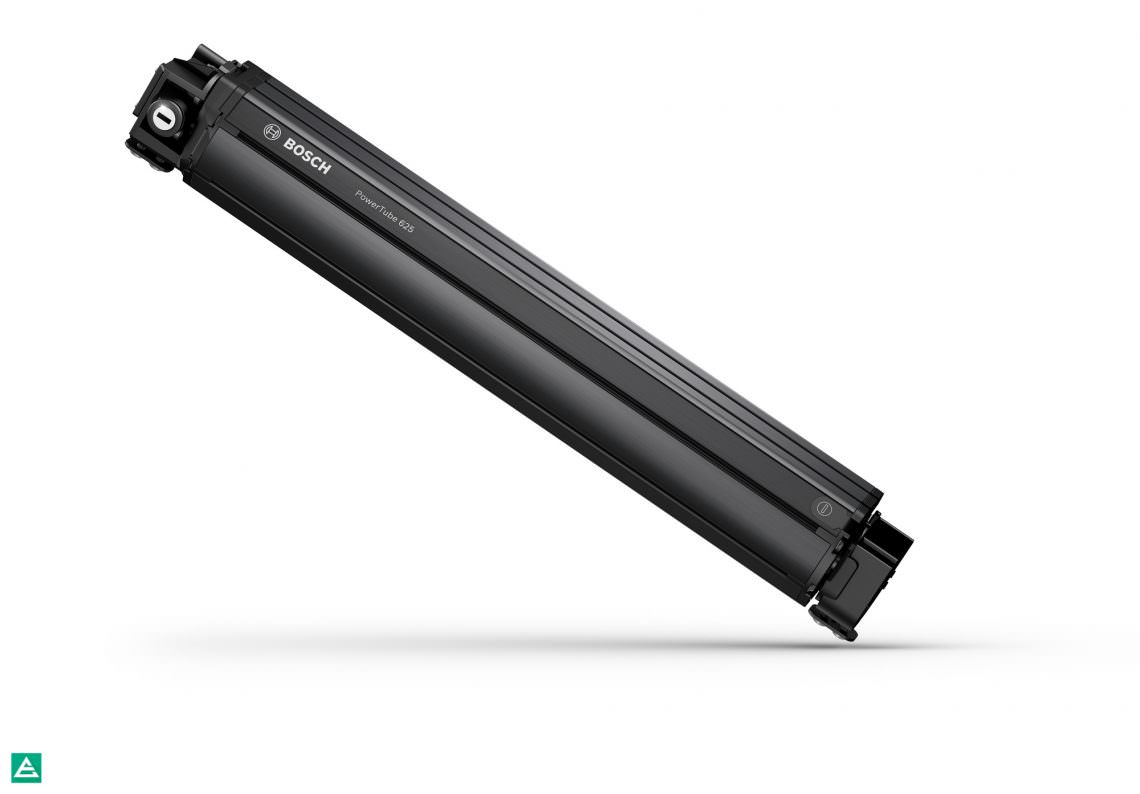
Testing the new Bosch Performance Line CX 2020-Motor
The Bosch Performance Line CX 2020 was designed with an eye toward eMTBing. In a nutshell, the latest incarnation of the Bosch Performance Line CX motor does pretty much everything better than its predecessor. On the trail, the new 75 Nm motor convinces with top-class modulation and delivers enough power to comfortably steam past its older brother, as well as the Shimano STEPS. The maximum support level has been increased from 300% to 340% and as a result, on steep climbs, the new Bosch keeps up with test winner of our motor group test, the Brose Drive S Mag, with the only being that the Bosch requires a higher cadence. The absolute highlight of the new Performance CX is the newly tuned eMTB mode: the progressive mode modulates dynamically between the Tour (140 %) and Turbo (340 %) modes and adjusts the support according to the riding scenario and the amount of pressure you put on the pedals. The new mode is incredibly accurate, smooth and easy to control and always delivers enough power. In other words, no other motor on the market feels as effortless and controlled on technical uphills as the Bosch Performance Line CX 2020!

The new Bosch delivers an outstanding ride. While other motors are either very sensitive but weak or too brutish and powerful, the new Bosch always hits the nail on the head.
Bosch have also revised the Turbo mode, which is now easier to control and a lot more sensitive on startup. The transition at the 25 km/h threshold is smooth and silky. However, the new Bosch does have a bit of a noise problem – not the typical noise of the motor humming under full load, but the coarse-toothed clunk of the chainring freewheel that produces a metallic sound when it engages and sounds almost like a clattering chain on rough downhills. As a result, eMTBs with a 2020 Bosch CX will be louder than most Shimano or Brose bikes, which sucks, because we all know how good a quiet bike feels!
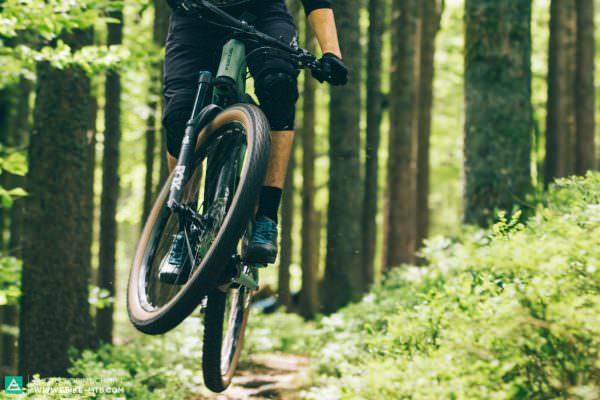

But what about that notorious pedal resistance? Well, there isn’t any!
In typical Bosch fashion, the Performance CX comes as a closed system and requires bike manufacturers to use Bosch’s in-house remotes, displays, motor software and rechargeable batteries. Regrettably, there’s no way to adapt the motor characteristics to a specific bike concept either. Despite a choice of five displays, the Purion and Kiox are the only reasonable option for sporty eMTBs. However, the latter still has some major issues: the display is hard to read on the trail and the buttons are poorly integrated into the cockpit and difficult to operate. Sadly, there are no new minimalist display/remote units on the horizon yet. Except for wireless software updates, the eBike Connect App only offers basic functions.
The low weight and compact housing of the new Bosch motor can have a very positive influence on the handling of new bikes with the Bosch motor.

As far as weight and size go, the new Performance CX is top notch. Light and compact, Bosch’s new eMTB motor hits the nail on the head. While the new shape gives bike manufacturers lots of freedom for new rear-end designs, its distinctive bend in the front creates new challenges in terms of optical integration, at least on designs without a cover. Despite its sophisticated anti-tuning software, Bosch still relies on exposed spoke magnets as speed sensors. Other manufacturers are already offering more precise and elegant integrated sensors.


Conclusion
The new Bosch Performance Line CX 2020 is noticeably smaller and lighter than its predecessor. Unfortunately, the closed system doesn’t allow for custom options and not even bike manufacturers are given the freedom to implement their own solutions. As far as display, remotes and integration go, we were expecting a lot more and still have to wait for more minimalistic options. Unfortunately, the loud metallic noise of the freewheel affects the ride experience too. In terms of performance, the Bosch Performance Line CX 2020 plays in the top league of eMTB motors! The new eMTB mode is the best progressive mode on the market and always delivers enough power.
If you’re interested in how the new Performance Line CX compete against his processor or against the other motors on the market just check our new vs. old-article and The best eMTB motor you can buy-comparison. For further information head to our Bosch overview site.
Did you enjoy this article? If so, we would be stoked if you decide to support us with a monthly contribution. By becoming a supporter of E-MOUNTAINBIKE, you will help secure a sustainable future for high-quality cycling journalism. Click here to learn more.
Words: Felix Stix, Robin Schmitt Photos: Diverse









